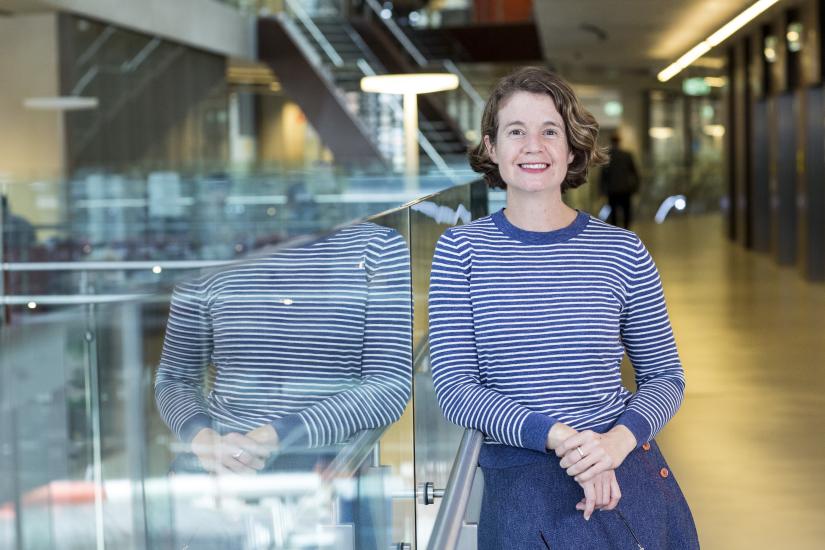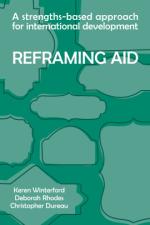ISF researcher’s new book unleashes a strengths-based approach, revealing how and why international development practice can change.

The international development and humanitarian sector needs to reframe aid, placing local communities at the forefront of their own development.
Dr Keren Winterford, Research Director at ISF has co-authored a new book ‘A strengths-based approach for international development: Reframing Aid, uncovering the transformative potential of a strengths-based approach in shaping a sustainable future.
Dr Winterford shares her thoughts on her forthcoming book and why we need to reframe international development aid.
Who is the book for?
Any person engaged in the international development and humanitarian sector will find this book useful. It is written for those who have been working in the sector for a long time and recognise the need to shift dominant problem-solving, needs-based approaches, or for those who are just starting and want to be informed by relevant theory and practice to guide their practice. Already there are people who have been using a strengths-based approach in international development: they will be interested to learn more about why and how it really works.
Why do we need to reframe aid?
Thinking and practice in international development aid have evolved over the last 70 years (since the end of World War 2) but the fundamental view that we are fixing problems in poor countries still remains. Lower- or middle-income countries are not problems to be fixed. Sustainable development doesn’t just happen ‘over there.’ We have shared experiences and challenges that need to be tackled as a global community.
Reframing aid through a strengths-based approach is really about starting from a different point, one where strengths are understood, expressed and recognised as the basis for moving forward. Reframing aid is about international development becoming an ally for people who determine priorities and positive agendas in each place, rather than being driven from outside. Reframing aid seeks to fuel change using the strengths that are already there, revealed and mobilised in each place. This approach is more respectful of history, politics, cultural values, relationships and previous experiences, among other factors.
What factors separate a strengths-based approach from a traditional approach to aid?
A strengths-based approach recognises that in every context there are strengths, assets, resources, or something that is working well that can be used to fuel change. Traditional approaches have framed countries, organisations or communities as problems to be fixed or needs to be addressed. These approaches put the development agenda at the centre, to fix problems or address needs. In contrast, a strengths-based approach puts local people at the centre, so they drive their own change agenda, with support from outside or other partners if appropriate.
A core difference relates to ‘how changes happens’. From a strengths perspective, change starts within a local context, and builds from the strengths, assets and resources, to realise the locally-decided preferred futures. This contrasts with traditional aid approaches which view other contexts as problems to be fixed, and therefore come up with solutions from outside.
A strengths-based approach recognises that when groups define the change they want themselves, and draw on their own strengths to achieve positive change, their level of motivation is much higher. Motivation is one of the most critical ingredients for change. It is easy to see that labelling people, organisations or countries as problems to be fixed is highly demotivating in contrast.
Can you tell us about some practical applications of a strengths-based approach / case studies from you work with ISF?
There are so many examples of how we have put a strengths-based approach into our practice. I have been using a strengths-based approach for decades and it permeates all my research work. For example, thinking about climate change action, we can focus on identifying vulnerabilities of communities in low-lying Pacific islands. Focusing on identifying vulnerabilities alone is not going address the complex issues. Instead, we focus on resilience, understanding how communities have survived and adapted for centuries, and how resilience can be strengthened to deal with the crisis that is climate change.
Another example is how we work with partners in our research activities. Wherever we do our research in Asia and the Pacific regions, we work with local partners. We always assume there is something that we can build on, past experience and expertise that provides the foundation for our shared practice together.
We do a lot of evaluations in the Asia and Pacific regions, for government or NGOs. Our evaluations are framed from a strengths-based approach, to learn about what has been working well and why. And to understand what might be better practice in the future. This framing is all about increasing development effectiveness, but in ways that are engaging and motivating for local actors to make the necessary changes they need to make, to better contribute to development outcomes.
MOre information

You can order your print copy or eBook when it becomes available on Thursday 15 June 2023. Visit Practical Action Publishing here: https://practicalactionpublishing.com/book/2660/reframing-aid

